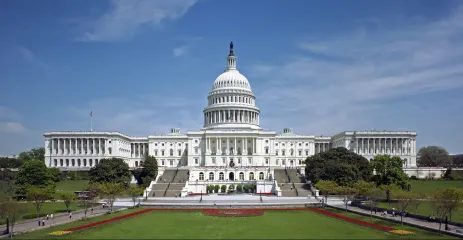- | Corporate Welfare Corporate Welfare
- | Expert Commentary Expert Commentary
- |
OPIC: Corporate Welfare and Foreign Policy
Established in 1971, the federal government’s Overseas Private Investment Corporation (OPIC) provides direct loans, loan guarantees, and political risk insurance to American and foreign companies looking to invest in emerging markets. It also provides debt financing to private equity investment funds that invest in emerging-market companies. OPIC is a textbook example of the federal government subsidizing commercial interests, which critics often derisively refer to as “corporate welfare.”
The Trump administration’s first budget proposal (released in May 2017) called for “ceasing new business operations and initiating the wind-down of the Overseas Private Investment Corporation (OPIC) starting in 2018 to reduce unnecessary Federal interventions that distort the free market.” In its justification for terminating the agency, the administration noted that the private sector can provide financing for investment opportunities in emerging markets without government involvement:
“Development Finance Institutions (DFIs) like OPIC can at times displace the private sector, particularly in emerging and developing markets that have active international finance firms or domestic financial institutions capable of providing similar financing. While the Administration wants US businesses to invest in emerging markets to grow their businesses and create American jobs, private sector financing is often available.”
Congress promptly ignored the administration. Instead, bipartisan legislation emerged in both houses of Congress that would combine OPIC with several development finance programs at the US Agency for International Development to form a new United States International Development Finance Corporation (DFC). Whereas OPIC was restricted to debt financing and insurance, the Better Utilization of Investments Leading to Development Act (“BUILD Act”) would give the new DFC the authority to issue grants and make equity investments. In addition, the maximum exposure to taxpayers from the DFC’s financing activities would be $60 billion – double OPIC’s current cap.
What sayeth the Trump administration?
Less than a year after calling for OPIC’s termination, the president’s budget proposal released in February completely reversed course:
“The Administration proposes to consolidate, reform, and modernize US Development Finance functions, such as USAID's Development Credit Authority (DCA) and the Overseas Private Investment Corporation (OPIC). The Development Finance Institution (DFI) encourages the participation of United States private sector capital and skills in the economic and social development of emerging market economies.”
The Trump administration originally said that OPIC should be terminated because its subsidies distort markets and are unnecessary. Now it claims that the subsidies from an expanded OPIC are needed to encourage the private sector to invest in emerging markets. That is, to put it mildly, quite a change of heart.
On Tuesday, the White House issued a statement supporting “the goals” of the BUILD Act. Here’s a snippet that encapsulates the administration’s justification:
“Current U.S. development finance tools are outdated and fragmented across multiple Federal agencies, and often are not well coordinated. This has hampered our ability to achieve key U.S. foreign policy and national security objectives and resulted in inefficient use of taxpayer dollars. Reform will catalyze market-based solutions as a clear alternative to state-led financing initiatives that undermine state sovereignty. Reform will also help the United States compete more effectively in this new era of strategic competition.”
Three things stand out.
First, this is being sold as a “reform” that would make the federal government’s foreign economic interventionism more operationally “efficient.” But what about market efficiency? The deadweight losses to society resulting from government subsidies exceed the gains to the privileged beneficiaries. The more important issue should be: Efficient bureaucracy or not, should the federal program in question even exist? Suppose a thief robs a house by picking the lock on the front door instead of breaking a window and entering. In either scenario, the homeowner gets robbed. But the homeowner won’t take any comfort in being robbed without his or her window being smashed. Using the door instead of the window merely enables the thief to more efficiently pilfer the home. Alas, it’s politically expedient to call for “reform” and “efficiency” instead of outright termination.
Second, when policymakers talk about “market-based solutions” for government functions it usually just means subsidies (and other privileges) for private interests. In the case of the proposed DFC, the administration employs the phrase in an attempt to draw a favorable contrast to completely state-directed foreign development initiatives like China’s. What the administration and Congress is proposing to do, however, is still government-led. Unfortunately, the administration had it right the first time when it noted that government subsidies distort markets.
Third, the real motivation for the proposed DFC is “foreign policy and national security objectives.” This is not about helping poor people in developing countries. The target here is China and it’s “One Belt, One Road” initiative aimed at enhancing Chinese global influence via massive state investments in infrastructure projects in Asia, Africa and elsewhere. While this is a deeper discussion for another day, it is disconcerting to see economic activities that are inherently voluntary and peaceful (i.e. trade and private foreign investment) being weaponized. (See George Mason economist Christopher Coyne’s discussion on “economic armaments” in this essay for more.)
